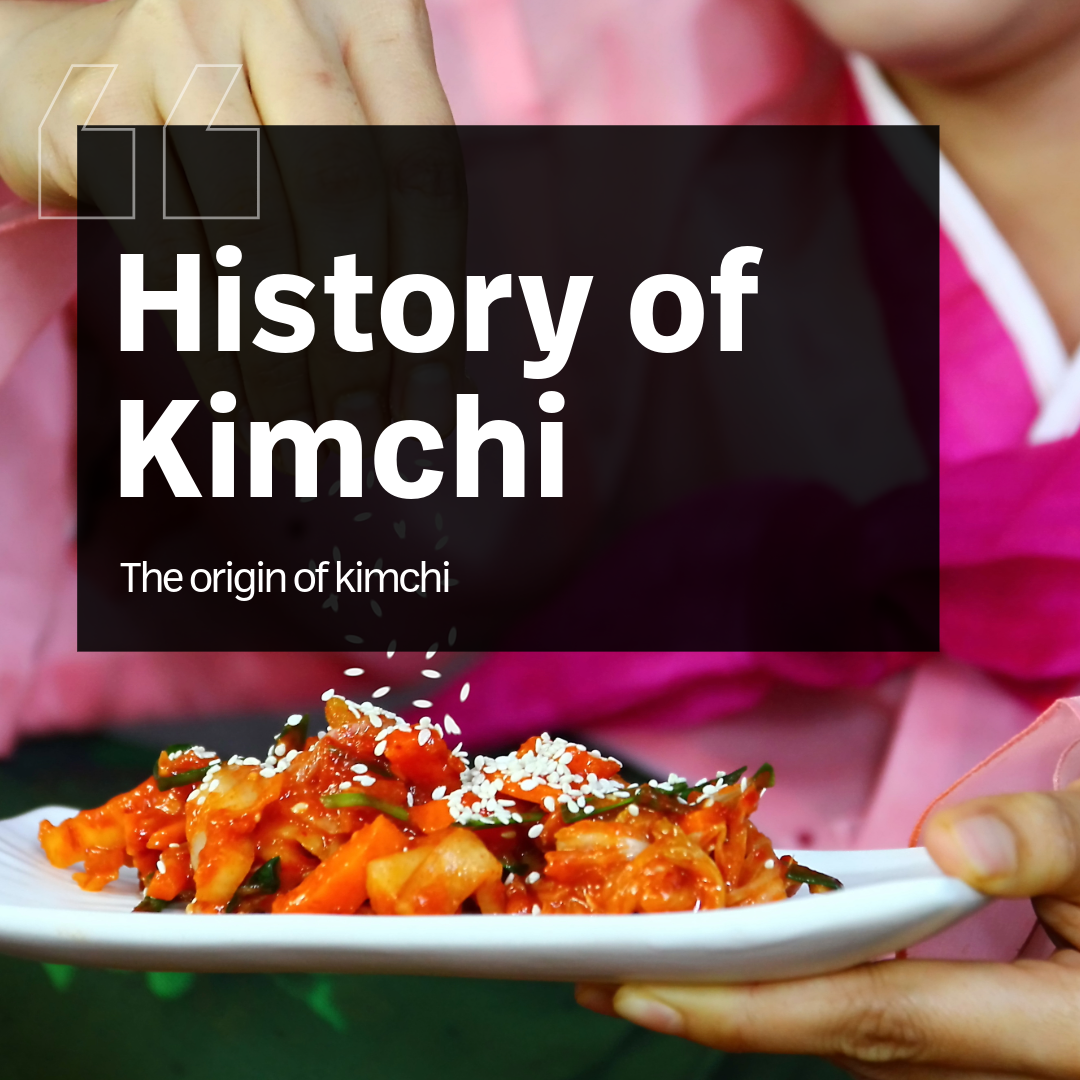Sarah Yoo
Sep 05, 2024
" UNESCO "
Recognizes Making-Kimchi Day
- Kimchi 101 #03
Did you know that making kimchi is more than just preparing a meal? It’s part of a tradition so rich and meaningful that UNESCO recognized it as a Cultural Heritage of Humanity! Behind every batch of kimchi lies a centuries-old story of community, collaboration, and family bonds.
Curious to learn more about how this humble dish became a global cultural treasure? Let’s dive into the heart of Korean culture with kimjang, the art of making and sharing kimchi!
UNESCO recognizes Kimjang
What is Kimchi?
It refers to " Making-Kimchi " day. Kimjang (or gimjang) is the traditional Korean practice of preparing large quantities of kimchi, typically in late autumn, to be stored and enjoyed throughout the winter. It's more than just food prep—kimjang is a community event where families and neighbors come together to make kimchi in bulk, share stories, and ensure that everyone is well-prepared for the colder months. Learn more about KimJang
UNESCO >
NESCO stands for the United Nations Educational, Scientific and Cultural Organization. It is a specialized agency of the United Nations that was established in 1945. UNESCO’s mission is to promote international collaboration in the fields of education, science, culture, and communication, with the goal of fostering peace, security, and sustainable development across the world.
Intangible Cultural Heritage
The culture of kimjang (김장), the traditional process of making and sharing kimchi, was inscribed on UNESCO’s Representative List of the Intangible Cultural Heritage of Humanity in 2013.
Image by Naver news>
Four Reasons
Cultural Significance
Kimjang is more than just the act of making kimchi; it is a deep-rooted cultural tradition that fosters community spirit, cooperation, and solidarity. It reflects the Korean values of sharing and caring, as families, neighbors, and communities come together to prepare kimchi for the winter months.
Transmission of Knowledge
Kimjang plays a crucial role in passing down culinary skills, traditions, and knowledge from one generation to the next. The methods, recipes, and cultural practices associated with kimjang are taught within families, ensuring the continuity of this cultural heritage
Environmental Harmony
The practice of kimjang highlights the importance of living in harmony with nature. It relies on seasonal cycles, particularly in preparing and storing ingredients that are harvested in their peak seasons, ensuring that kimchi remains nutritious throughout the winter.
Cultural Identity
Kimjang is a key element of Korean cultural identity, representing a strong connection to the country's agricultural heritage and traditional ways of life. The communal activity reinforces social bonds and contributes to a sense of belonging among participants.
The UNESCO inscription of kimjang emphasizes its value as a living tradition that continues to shape Korean society while promoting the universal values of community, sustainability, and cultural continuity.
Kimjang behind-the-scenes stories

During the kimjang process, it was customary for households to prepare a couple of geun (a traditional Korean unit of weight) of pork, boiling it and setting it aside along with the tender yellow inner leaves of napa cabbage and seasoning. This meal, called sokdaessam, was provided for the workers helping with kimjang, and the tradition still continues today in some places. After the kimjang was completed, it was common to share the salted napa cabbage or any leftover kimchi filling with neighbors, as well as to distribute freshly made geotjeori (fresh, unfermented kimchi). Poorer households, whose wives often helped with kimjang at other homes, would sometimes make their own kimchi with the cabbage and seasoning they received as payment for their assistance.
Fun Fact: Foods You Must Eat on Kimjang Day
In Korea, it’s customary to prepare and eat suyuk (boiled pork) on the day of kimjang, the traditional kimchi-making event. This practice even led to the creation of bossam, a dish where suyuk is wrapped in cabbage leaves along with various condiments. As a Korean, I’ve always accepted this as a given, but I recently found myself wondering: Why do we eat suyuk on kimjang day? What is suyuk? Sooyuk (수육) refers to a Korean dish made by boiling pork, typically pork belly, until it is tender and juicy. Eating it on kimjang day has become a cherished tradition in Korea, deeply connected to the culture of making kimchi. There are several reasons why suyuk is enjoyed during this time:

Complementary Flavors
Suyuk pairs perfectly with the fresh, spicy flavors of kimchi. The tender, mild taste of the boiled pork balances the sharpness and heat of the freshly made kimchi, particularly when wrapped together with the yellow inner cabbage leaves and kimchi seasoning in a dish known as sokdaessam (속대쌈).
Celebration and Reward
Kimjang is a labor-intensive process that can take days to complete, involving many people working together. Serving suyuk is a way to reward everyone for their hard work. It’s a hearty and satisfying dish that brings warmth and energy to those who have spent hours preparing the kimchi.
Tradition of Sharing
Just as kimchi itself is a food meant to be shared, the practice of eating suyuk on kimjang day reinforces the communal aspect of the tradition. After the kimchi is made, families and neighbors gather to enjoy a meal together, strengthening social bonds and creating a sense of community.
Nutritional Balance
Suyuk adds protein to the meal, complementing the vitamins and nutrients found in kimchi. This makes the meal more balanced and nourishing, which is especially important as people prepare for the cold winter months.
The Youtube of Kimchi History
Conclusion
Kimjang (kimchi- making day) is the traditional Korean practice of making large quantities of kimchi, usually in late autumn, to prepare for the winter months. It involves families and communities coming together to make, share, and store kimchi.
When making kimchi, various types are typically prepared, but the most common is Pogi Kimchi. Pogi Kimchi is made by splitting whole Napa cabbage in half, salting it, and then applying various seasonings to each layer of the cabbage. The amount of seasoning used during this process greatly influences the flavor of the kimchi. The biggest advantage of Pogi Kimchi is its refreshing taste.




